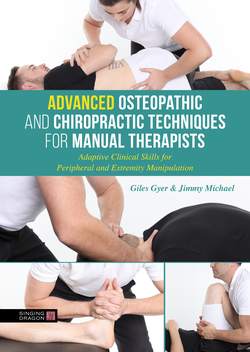Читать книгу Advanced Osteopathic and Chiropractic Techniques for Manual Therapists - Giles Gyer - Страница 20
На сайте Литреса книга снята с продажи.
Conclusion
ОглавлениеIn this study, we discussed various theories proposed to date to explain the neurophysiological effects of spinal manipulation, and reviewed the mechanistic studies that have been done to validate the relevance of these theories. So far, the exact mechanism(s) through which spinal manipulation works has not been established. Experimental models conducted on both animal and human subjects have indicated that mechanical stimulus applied during manipulation produces a barrage of input into the dorsal horn of the spinal cord, which initiates a cascade of neural responses involving complex interactions between the PNS and CNS. Observing neurophysiological responses following spinal manipulation, these models have suggested possible mechanisms underlying the neuromuscular, autonomic, neuroendocrine and hypoalgesic effects of manipulation. However, the relevance of these implications in relation to the observed clinical effects remains unclear. This is because a majority of the mechanistic studies published to date have mainly investigated short-latency changes or immediate effects of spinal manipulation using their experimental models. In addition, the dose–response relationship associated with the specific neural effect of manipulation has frequently been overlooked in the current literature. Therefore, future studies projected at understanding the possible neural mechanisms of spinal manipulation should carefully consider these two variables.
